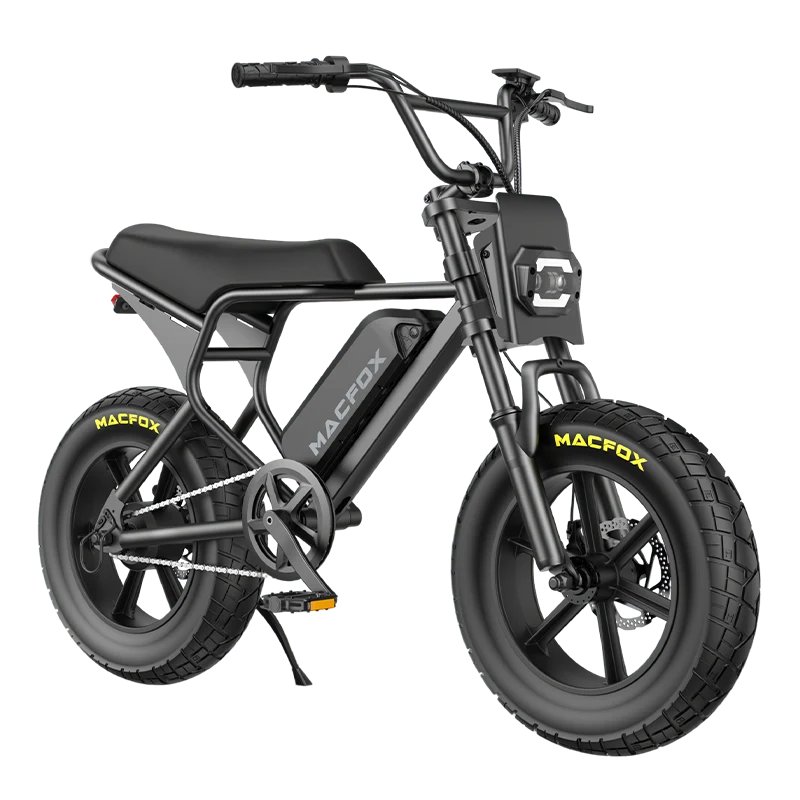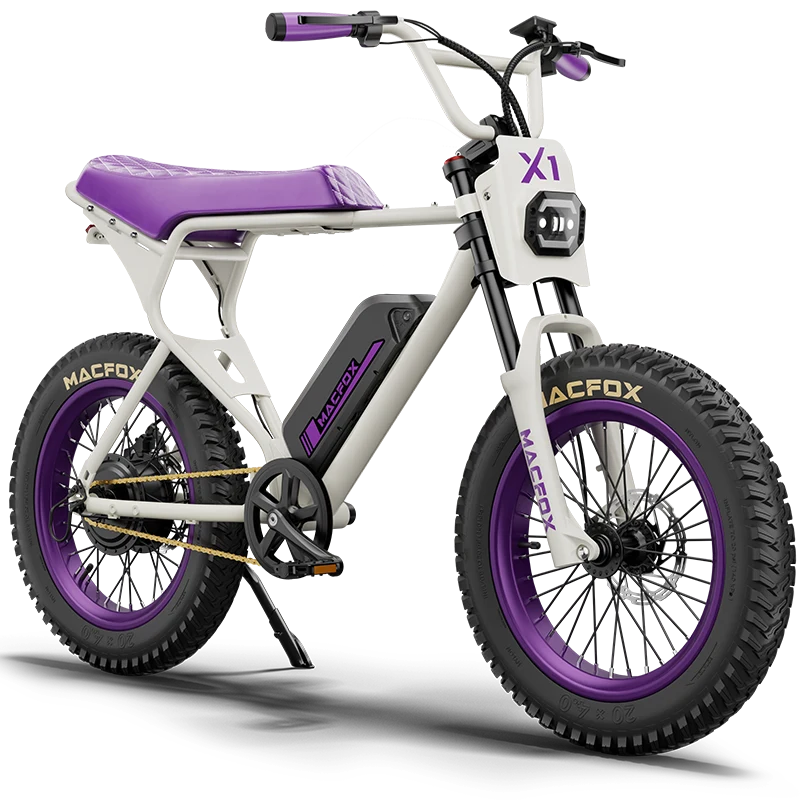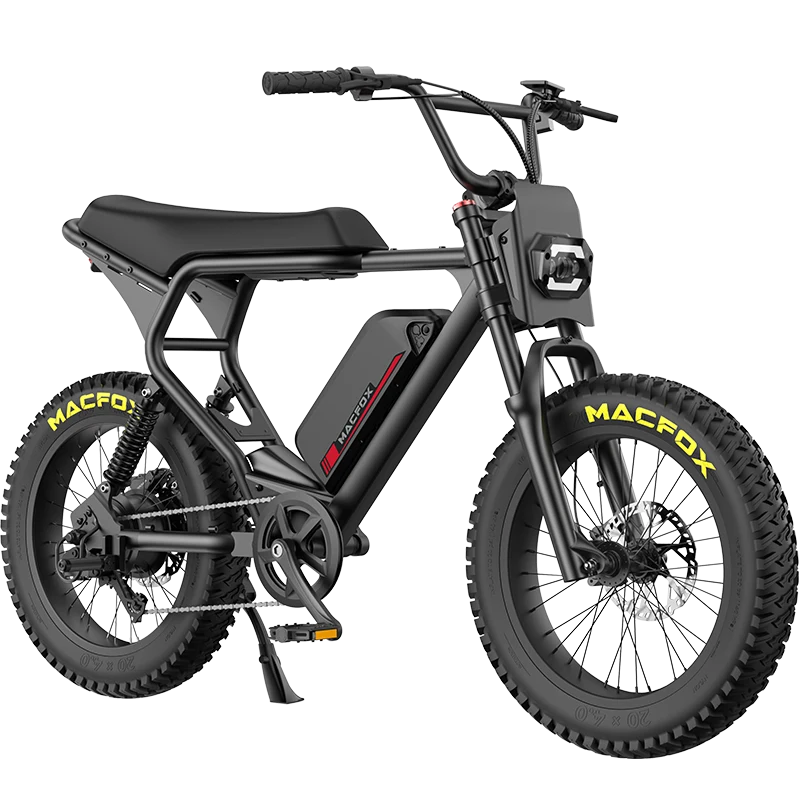If you’ve ever felt every bump and crack in the pavement through your handlebars, you know just how critical electric bicycle shock absorbers are.
Far more than a comfort upgrade, a well-tuned suspension system on an e-bike protects your body, preserves battery life, and gives you confidence at higher speeds or on rugged trails.
In this guide, we’ll explore why e-bike suspension matters, compare the major technologies, and show you how to select and maintain the best shock absorber for your riding style.
Why E-Bike Suspension Matters
Electric bikes weigh more and travel faster than their human-powered counterparts, so every impact demands more from your suspension. Here’s what good shock absorbers deliver:
Comfort for the Long Haul: By smoothing out potholes and trail chatter, suspension systems reduce rider fatigue—letting you go farther without sore joints or a bruised tailbone.
Enhanced Control & Traction: Keeping your tires planted means better steering, braking, and climbing. A quality suspension prevents “skipping” over rough patches and maintains consistent ground contact.
Improved Safety: Less vibration and jarring translates to steadier handling, especially during emergency maneuvers. Plus, damping can actually preserve battery range by cutting down on wasted energy from uncontrolled rebound.
Component Protection: Your frame, electronics, and drivetrain all last longer when they’re not constantly slammed by road shock.
Recommended: 2025's Best Affordable Electric Bikes to Buy Now
Suspension System Types
E-bike shock absorbers fall into four broad categories—each with its own sweet spot:
| Type | Key Benefits | Ideal For |
|---|---|---|
| Rigid | Lightest, most efficient pedaling, lowest cost | Smooth paved roads, casual commuters |
| Hardtail | Front impact absorption, moderate cost & weight | Mixed terrain, urban commutes, light trails |
| Full-Suspension | Maximum comfort and control, superior traction | Rugged mountain trails, high-speed descents |
| Supplemental | Seatposts, stems, or wide tires for targeted damping | Budget builds, mild off-road, ergonomic upgrades |
-
Rigid: No shocks—best for flat city streets.
-
Hardtail: Front fork only, balancing comfort and efficiency for varied surfaces.
-
Full-Suspension: Dual shocks deliver the ultimate ride quality off-road.
-
Supplemental Components: Suspension seatposts, stems, or high-volume tires can soften your ride without the complexity of a full suspension.
Core Shock Technologies
The internal mechanism you choose shapes ride feel, tunability, and maintenance:
Coil (Spring)
-
How it Works: Steel coil compresses under load.
-
Pros: Durable, consistent feel, excellent small-bump sensitivity, minimal maintenance.
-
Cons: Heavier, limited tuneability (you swap springs to change stiffness).
-
Best For: Mid-range e-bikes, commuters, steep downhill rides where reliability matters.
Air (Pneumatic)
-
How it Works: Compressed air in a chamber acts as a spring.
-
Pros: Ultra-light, infinite tuneability via air pressure and volume spacers, excellent bottom-out resistance.
-
Cons: More seals mean more maintenance; performance can vary with temperature.
-
Best For: Performance-oriented e-MTBs, riders who demand precise damping control.
Hydraulic
-
How it Works: Oil flows through adjustable valves to dampen both compression and rebound.
-
Pros: Lightest damping solution, extremely smooth action, minimal upkeep, very reliable.
-
Cons: Highest cost; internal complexity.
-
Best For: High-end full-suspension e-bikes, those who value top-tier performance and long service intervals.
Rubber (Elastomer)
-
How it Works: Rubber blocks absorb small vibrations.
-
Pros: Simple, light, cheap, no servicing.
-
Cons: Material degradation over time; limited travel.
-
Best For: Entry-level e-bikes, lightweight comfort upgrades.
Coil vs. Air: A Closer Look
| Feature | Coil Shock | Air Shock |
|---|---|---|
| Weight | Heavier | Lighter |
| Tuneability | Limited—you swap springs | Infinite via shock pump & spacers |
| Small-Bump Sensitivity | Excellent (less seal friction) | Good |
| Bottom-Out Resistance | Linear spring—may need bumpers | Progressive air spring |
| Heat Consistency | Stable under long descents | Can fade as air heats up |
| Maintenance | Low—fewer seals | Higher—periodic air-can servicing |
| Ideal Terrain | Steep downhill, enduro | Trail riding, jumps, mixed terrain |
-
Ride Feel: Coil yields a planted, linear feel; air provides a livelier, more adjustable ride.
-
Adjustments: Coil is “set-and-forget”; air demands occasional servicing but lets you fine-tune on the fly.
E-Bike–Specific Considerations
Weight & Battery Placement
-
Center-Mounted Battery: Lowers center of gravity (CoG) for nimble handling.
-
Rear Rack Battery: Raises CoG, can make the bike feel “tippy” and strain your rear shock.
-
Tip: Opt for downtube integration on performance e-bikes; consider sturdier shocks if you must mount the battery at the rear.
High Speeds & Motor Torque
-
Faster travel intensifies impact forces—look for “e-optimized” forks with reinforced stanchions.
-
Mid-drive motors centralize mass and preserve suspension kinematics; hub motors add unsprung weight that forces your shock to work harder.
Frame & Component Compatibility
-
Wheel Size: 27.5″–29″ for rollover ease; smaller wheels for agility.
-
Axle Standards: Boost (15×110 mm front, 12×148 mm rear) improves stiffness—fast becoming the norm on e-MTBs.
-
Steerer Tube: Tapered 1 1/8″→1 1/2″ preferred for high-end forks.
-
Always verify that your frame, fork, and motor choice align with the suspension specs.
Tuning Your Suspension
Travel: Short vs. Long
-
Short-Travel (30–120 mm): Urban rides, smooth trails. Responsive steering.
-
Long-Travel (>120 mm): Downhill, enduro, big hits—prioritize stability over weight.
Damping Adjustments
-
Compression Damping: Controls how fast your fork/shock compresses under load.
-
Low-Speed: Affects slow inputs (pedaling, gentle bumps).
-
High-Speed: Manages big hits (rocks, drops).
-
-
Rebound Damping: Governs how quickly the suspension returns. Too fast = “pogo,” too slow = “packed down.”
-
Lockout: Rigid setting for climbs or pavement—maximizes pedaling efficiency.
Setting Sag
Sag is how much your suspension compresses under your weight:
-
Front Fork: 20–30% of travel
-
Rear Shock: 25–35% of travel
-
Procedure: Use a shock pump, an O-ring for measurement, and adjust pressure until you hit your target sag. For heavier e-bikes, take extra care: a few PSI change has a big impact on ride quality.

Maintenance & Troubleshooting
| Issue | Cause | Solution |
|---|---|---|
| Squeaking/Creaking | Dry pivots or seals | Clean and apply suspension-specific lube |
| Oil/Air Leaks | Worn seals or damaged internals | Professional seal replacement or servicing |
| Frequent Bottom-Out | Low pressure or weak spring | Increase air pressure or change spring rate |
| Limited Travel | Obstruction or incorrect damping | Inspect for debris; re-tune compression/rebound |
Routine Care Tips:
-
Wipe down stanchions after every ride.
-
Check torque on mounting hardware monthly.
-
Follow manufacturer’s service intervals for oil changes and seal replacements—especially on air shocks.
Market Snapshot & Pricing
From budget commuters to premium e-MTBs, suspension costs vary widely:
-
Entry-Level Forks: $159–$300
-
Mid-Range Forks: $500–$800
-
High-End Forks: $1,000+
-
Basic Rear Shocks: $30–$100
-
Premium Rear Shocks: $500–$900
Top suspension brands—Macfox, RockShox, Öhlins, Marzocchi, SR Suntour—now offer “e-optimized” models with reinforced hardware, advanced damping, and even electronic auto-adjust features like Fox Live Valve or RockShox Flight Attendant.
Conclusion
Choosing the right electric bicycle shock absorber is more than a component swap—it’s about tailoring your ride for comfort, control, and efficiency under the unique demands of e-biking.
Whether you prioritize the robust consistency of coil springs, the lightweight adjustability of air systems, or the pinpoint precision of hydraulic damping, there’s a suspension solution built for your style and terrain.
By understanding core technologies, tuning your setup correctly, and staying on top of maintenance, you’ll unlock the full potential of your e-bike—enjoying smoother commutes, safer descents, and longer adventures.
FAQs
Q: How often should I service my e-bike suspension?
For air shocks, aim for a lower-leg service every 50–100 hours of riding and a full rebuild annually. Coil and hydraulic systems typically need less frequent attention—check seals and oil every 100–150 hours.
Q: Can I mix coil and air suspension on a dual-suspension e-bike?
Absolutely. Some riders prefer a coil rear shock for consistent traction and an air-spring front fork for tunability. Just ensure both components fit your frame and match your riding preferences.
Q: Will suspension lockouts really save battery power?
Yes. Locking out your suspension on smooth climbs or paved stretches prevents energy loss from suspension movement, improving pedaling efficiency and extending your e-bike’s range.


















